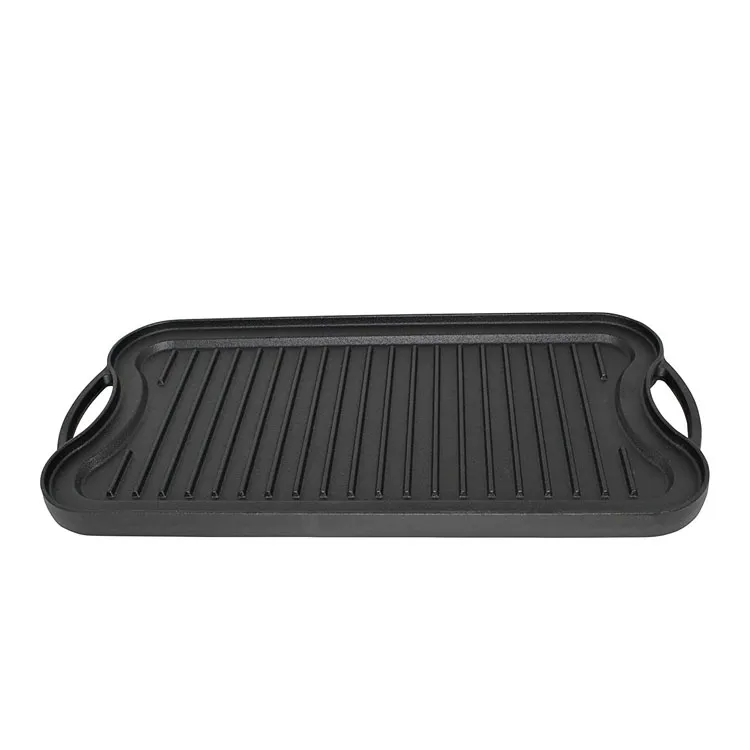
cast iron skillet weight
Understanding the Weight of Cast Iron Skillets What You Need to Know
Cast iron skillets are beloved cookware that have stood the test of time, cherished for their durability, heat retention, and versatility in the kitchen. One of the key considerations when choosing a cast iron skillet is its weight. Understanding the weight of cast iron skillets can significantly influence your cooking experience, from handling to performance.
The Basics of Cast Iron Skillets
Cast iron cookware has been used for centuries, and its popularity continues to grow among home cooks and professional chefs alike. The primary material, cast iron, is a iron-carbon alloy that is poured into molds and allowed to cool. This process results in the heavy, solid pieces of cookware that are remarkably efficient at retaining heat and maintaining even cooking temperatures.
Typical Weight Range
The weight of a cast iron skillet can vary significantly depending on its size and the manufacturer. Generally, cast iron skillets can weigh anywhere from 3.5 to 12 pounds (1.5 to 5.4 kg) or more. A standard 10-inch skillet typically weighs around 4.5 to 6 pounds. Larger skillets, like a 12-inch model, can weigh anywhere from 8 to 10 pounds. This substantial weight is one of the reasons cast iron skillets are highly regarded for browning meats and searing vegetables they hold heat well, allowing for even cooking.
Why Weight Matters
The weight of a skillet can impact several aspects of cooking. A heavier skillet will provide better heat retention, leading to superior browning and cooking performance. It also means that once the skillet is heated, it can maintain its temperature more effectively, reducing the risk of hot spots which can lead to uneven cooking.
cast iron skillet weight

However, the weight can also be a consideration for everyday handling. A particularly heavy skillet can be cumbersome to maneuver, making it challenging to lift or flip food. This could be a crucial factor for individuals with limited strength or mobility. Many cooks often find that a 10 or 12-inch skillet strikes an ideal balance—offering enough surface area for cooking while remaining manageable in weight.
Choosing the Right Skillet for You
When selecting a cast iron skillet, consider both the weight and the size that best suits your cooking style. If you frequently cook for larger groups, a bigger, heavier skillet may be beneficial despite the added weight. Conversely, if you typically cook for one or two people, a lighter, smaller skillet could be easier to manage without sacrificing performance.
Also, consider how you will be using the skillet. Those who plan to move it in and out of the oven may prefer a weight they can comfortably handle. Alternatively, if most cooking will be done on the stovetop, a heavier skillet might not pose as significant a challenge.
Care and Maintenance
Regardless of weight, cast iron skillets require proper care to maintain their durability and non-stick properties. Regular seasoning and careful washing are essential to prevent rust and ensure longevity. The care regimen may also demand a bit more effort than non-stick alternatives, but many enthusiasts believe the outstanding characteristics of cast iron are well worth it.
Conclusion
The weight of a cast iron skillet is a vital consideration that can influence your cooking experience. From enhancing heat retention to affecting the ease of handling, being informed about skillet weight can help you choose the best cookware for your kitchen needs. Ultimately, whether you are a seasoned chef or a home cook, understanding the nuances of cast iron skillet weight can enhance your culinary adventures. Happy cooking!
-
Season Cast Iron Perfectly with GPT-4 Turbo TipsNewsAug.01,2025
-
High Quality Cast Iron Cookware - Baixiang County Zhongda MachineryNewsAug.01,2025
-
Premium Cast Iron Pan: Durable & Perfect HeatNewsAug.01,2025
-
High Quality Kitchen Durable Black Round Cast Iron Cookware Pancake Crepe Pan-Baixiang County Zhongda Machinery Manufacturing Co., Ltd.NewsAug.01,2025
-
Cast Iron Cookware - Baixiang County Zhongda Machinery | Nonstick, Heat ResistanceNewsAug.01,2025
-
High Quality Kitchen Durable Black Round Cast Iron Cookware - Baixiang County Zhongda Machinery | Non-Stick, Heat Retention, DurableNewsJul.31,2025


